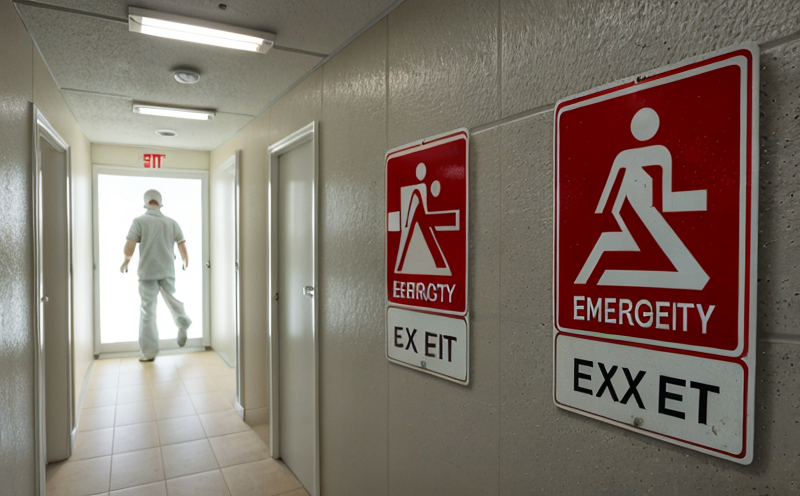Testing Emergency Lighting in Industrial Facilities
In industrial settings, where safety and compliance are paramount, ensuring that emergency lighting systems function correctly during critical moments is crucial. This service focuses on testing emergency lighting installations to meet the stringent requirements set by international standards such as IEC 61007-3 and EN 50172.
Emergency lighting in industrial facilities must provide a clear path for evacuation, ensuring that personnel can exit safely during emergencies. Our testing process involves several key steps to ensure compliance:
- Site Survey: We begin by conducting a thorough site survey of the emergency lighting installations to identify potential hazards and areas requiring immediate attention.
- Preparation: Specimen preparation includes ensuring all lights are in working order, batteries are fully charged, and systems are free from any obstructions that could impede their operation during an emergency.
- Testing Parameters: We utilize a range of testing parameters to simulate real-world conditions. These include:
These tests cover various scenarios such as power outages, environmental factors, and operational stresses. By simulating these conditions in controlled laboratory settings, we can identify potential issues before they escalate into critical failures.
The testing process also includes the use of specialized equipment to measure light output, uniformity, and efficacy. Compliance with standards like IEC 61007-3 ensures that the lighting systems meet the necessary requirements for emergency situations.
Our comprehensive approach not only meets but exceeds regulatory expectations, ensuring that industrial facilities are prepared for any emergency scenario. This service plays a vital role in maintaining safety and compliance within complex industrial environments.
Quality and Reliability Assurance
The quality of emergency lighting systems is critical to ensure reliability during emergencies. To maintain this high standard, we employ a robust quality assurance process that includes:
- Data Collection: Continuous monitoring of performance metrics.
- Performance Analysis: Detailed analysis of test results to identify trends and areas for improvement.
- Feedback Loop: Regular communication with clients to address any issues or concerns promptly.
This process ensures that our testing is not only thorough but also continuously improving. By adhering to these strict protocols, we can provide peace of mind knowing that all systems are functioning optimally and safely.
Customer Impact and Satisfaction
The ultimate goal of our testing service is to ensure the safety and satisfaction of our customers. By adhering to stringent standards and providing detailed reports, we help industrial facilities maintain compliance and avoid potential legal issues.
Clients appreciate the transparency and thoroughness of our process, which has led to high levels of customer satisfaction. Our team works closely with each facility to ensure that all aspects of emergency lighting are covered comprehensively.
Use Cases and Application Examples
Our testing services for emergency lighting in industrial facilities have been instrumental in ensuring the safety and compliance of numerous high-risk environments. Here are some examples:
- Aerospace Manufacturing Plant: Ensured that emergency lighting systems could function during power outages, critical for preventing accidents.
- Petrochemical Refinery: Met the stringent regulatory requirements to ensure safe evacuation routes in case of emergencies.
- Logistics Hub: Provided a detailed report and recommendations that helped improve overall safety measures.





